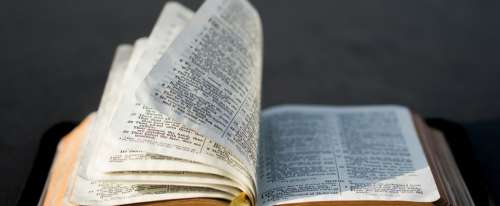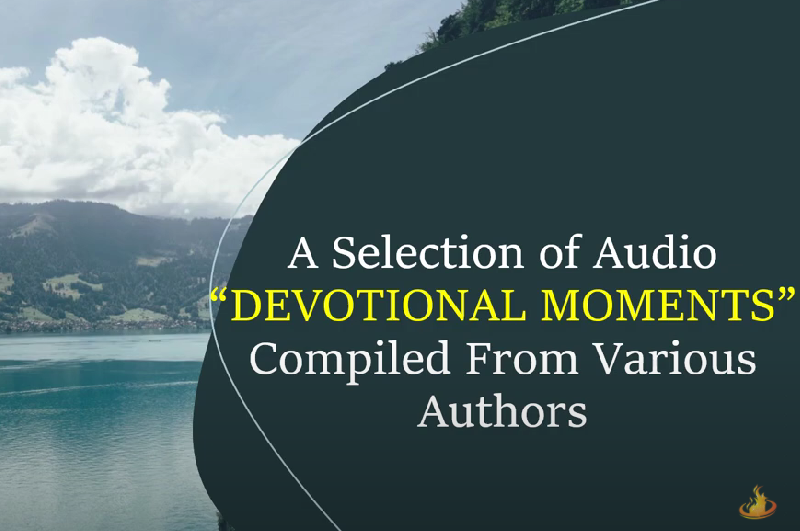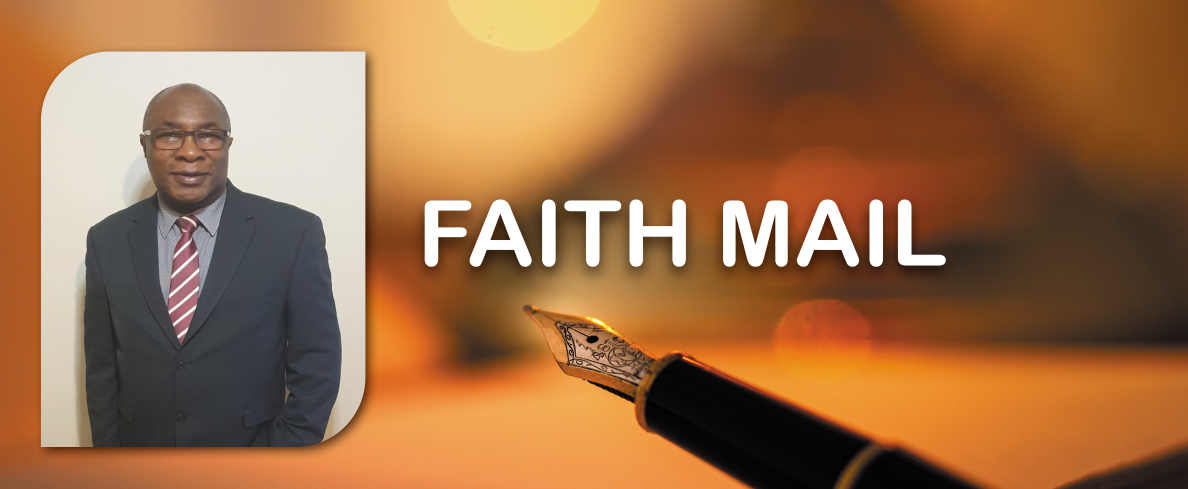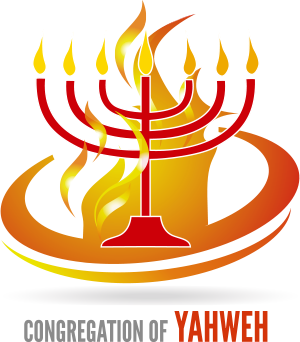The Passover season holds immense significance to the believer who has been cleansed by the blood of Yahshua - the ultimate ‘Passover Lamb’. It is a time to be remembered - forever.
In a Jewish home, during the 14th Aviv, a table is carefully laid with wine and unleavened bread (matzos), a ceremonial plate (called a seider dish) containing a roast shank-bone of lamb, a roast egg, bitter herbs, parsley, a small bowl of salt water, a mixture of apples, almonds, raisins and cinnamon formed into small mud-ball shapes, and candlelight to create the right atmosphere.
In venues throughout the country, tables are also carefully laid with matzos and wine, bitter herbs, salt water, salad, fruit, and the same mud-ball mixture. Lamb is roasted and the ‘Passover’ meal is enjoyed by the church family.
“For what purpose?” you may ask. For none other than an act of obedience to Yahweh, Who said to Moses, “…this day shall be to you…a memorial, and you shall keep it a feast to Yahweh throughout your generations; you shall keep it…forever.” (Ex. 12:14) Aviv 14th is Yahweh’s Passover.
The Passover season holds immense significance to the believer who has been cleansed by the blood of Yahshua - the ultimate ‘Passover Lamb’. It is a time to be remembered - forever.
It is the 10th day of Aviv. A perfect, one-year old lamb, male and without flaw or blemish is separated from the rest of the flock and kept without food for the next four days. On the 14th Aviv it is ceremonially killed, and the blood carefully caught in a bowl, for this red substance is to be extremely important. Next the blood is smeared onto the doorpost and lintel of the house, while the whole lamb is roasted with fire, ready to be eaten, later that night, with unleavened bread and bitter herbs. Throughout the whole land of Goshen, in every home, the action is repeated, and everywhere the door-frames are smeared with blood.
Why all this important activity and preparation? It is the night of Israel’s deliverance from the bondage and oppression of Egypt. Yahweh’s final judgement is to be meted out against Pharaoh and his already-crumbling empire. At midnight a destroying angel from Yahweh is to pass through the entire land of Egypt (which includes Goshen, the settlement of the Children of Israel) entering any home not marked with blood and killing any firstborn male (including cattle and other livestock) of that family. Only the houses smeared with the blood of the perfect lamb will be safe from destruction, for he will pass over those so protected. The blood of the paschal (or Passover) lamb will be the only acceptable salvation.
And it was so! Thus on Aviv 14th, every year, we remember that first Passover. The matzos is a reminder of the hasty departure from Egypt (the bread had no time to rise); the bitter herbs speak of the oppression and bondage of slavery; the salt-water of the tears shed “…by reason of the bondage…”; the mud-balls are a graphic, visual reminder of the hard labour making bricks; and candles are significant because they remind us that the first Passover took place at night. It is a night to remember – a night different from all the rest. And we rejoice in the memory of Israel’s deliverance from bondage and slavery.
It is the 14th Aviv. (Remember Yahweh’s day is ‘an evening and a morning’.) Yahshua is reclining at a table, with His disciples, in a large, unfurnished upper room in Jerusalem. His desire had been to eat this Passover meal with His disciples, but He knows He cannot because His hour has come (John 13:1). He has been chosen by Yahweh to be the new type of paschal Lamb. He, too, has been separated – this had taken place when He was 30 years old – and now, in His 4th year of ministry, He knows He is to die, He is to be killed for the sins of the whole world; His blood is to be spilled to bring salvation and deliverance to mankind. But what wrong has He done? Like the Passover lambs of years ago, He, too, is male, perfect, without flaw of character, without personality defect, with no record of sin or wrong. On this evening before His death, Yahshua is to institute a new covenant supper. (Some people call this the ‘Lord’s Supper’.) He takes bread, gives thanks for it, breaks it and gives it to the 12 men saying, “Take eat…this is My body…given for you”. He takes a cup, gives thanks over it and passes it to each disciple in turn, saying ‘This is My blood of the New Covenant…shed for many…Do this in memory of Me.” (Luke 22:19-20)
After washing the disciples’ feet (which He enjoins them also to do), Yahshua goes to the Garden of Gethsemane, where He is later arrested. He stands trial, and suffers terrible beatings, ridicule and torture throughout the night and early into the next day. Finally, at about the sixth hour, Roman time (John 19:14), He is sentenced to death on a wooden stake. His crime…innocence! The accusation…“He claims to be the Son of Yahweh.” (John 19:7)
As Yahshua hangs on the stake, the blood flows from His head, His hands, His feet, and pours out from the naked wounds of His torn back. It is preparation day for the Passover, and the paschal lambs are also being slaughtered in Jerusalem. How appropriate that Yahweh’s paschal Lamb should be killed now! Soon after 3 p.m. Yahshua breathes a sigh - “It is finished” - bows His head and dies.
It is only a matter of a few hours before the 1st Day of Unleavened Bread. The Jewish leaders want the bodies taken down and buried before this special Sabbath begins. They ask Pilate that the death process be speeded up. The two thieves, crucified with Yahshua, are still alive - their legs are duly broken. Yahshua, however, is already dead (having, of His own accord, given His life to Yahweh) so, rather than break His legs, a soldier standing nearby thrusts his great spear into Yahshua’s side, puncturing His heart. A sudden flow of blood and water gushes out spilling ruthlessly upon the ground. The paschal Lamb is drained of all His blood – that special red substance which will cleanse the sinner of his sin, redeem him to Yahweh and release him from the bondage and slavery of sin, and from the hand of the cruel taskmaster, satan.
On Aviv 14th, Yahweh’s Passover, Yahshua died. This day is not a special Sabbath, but a day of remembering – a memorial to the death of paschal lambs: those killed to deliver the Children of Israel from the bondage of slavery; and the Lamb of Yahweh, slain to take away the sins of the whole world.
Aviv 15th is the beginning of the Feast of Unleavened Bread which lasts for seven days, the first and last days being ‘holy convocations’ (i.e., an assembly of the people together) when no work is to be done. Remember that day 15 is the time of the full-moon. A very interesting discovery made is that the number 15, in Hebrew, spells Yahweh’s Name! How special of Yahweh to inscribe His Name into the two major Feasts - Unleavened Bread and Tabernacles.
In the Bible ‘leaven’ speaks to us of sin (sometimes it means influence). How appropriate that, after the sacrifice for sin, we should go into a period of ‘no sin’. The Feast of Unleavened Bread constantly reminds us that, once we have applied Yahshua’s blood to our lives, there is no more record of sin and wrong. We can live without sin, and under the influence of Yahshua.
On the day after the weekly 7th-day Sabbath of the Passover week, the priests would wave loaves of the first-fruits of the barley crop in thanksgiving to Yahweh for the harvest (Lev. 23:10-11). On the day after the weekly Sabbath of the Passover week of Yahshua’s crucifixion, Mary (in Hebrew, Miriam) Magdalene went early to the tomb where Yahshua had been buried, but He was not there. He had already risen, some time during the close of the weekly Sabbath, having been dead for three days and nights. Yahshua, however, appeared to Miriam in the Garden. As she was about to touch Him, He said, “Touch me not; for I am not yet ascended to My Father.” (John 20:17) Yahshua had not yet ascended to Yahweh, taking with Him the firstfruits of those righteous dead – He being our heavenly High Priest. Once Yahshua had completed this duty of presenting the first resurrected believers to His Father, He appeared to His disciples who were then able to touch Him (Luke 24:39-40).
The parallel of Yahshua’s life and the Feast of Passover is so precise that there can be no doubt that Yahweh engineered all the circumstances! The Feasts of the first month are a constant reminder of:
 The Living WordNew Audio Devotional
The Living WordNew Audio Devotional
Click to see the whole passage:
1 Corinthians 15:19-20 NIV - If only for this life we have hope in - Bible Gateway

Rejoice, Rejoice, Oh Christian, Lift Up Your Voice And Sing Eternal Hallelujahs To [Yahshua the Messiah] The King! The Hope Of All Who Seek Him, The Help Of All Who Find, None Other Is So Loving, So Good And Kind.
Homer A. Rodeheaver

The Congregation Of Yahweh
Head Office (UK)
27A Carlton Road
Nottingham
Nottinghamshire
United Kingdom
NG3 2DG
T: 0115 837 8083
E:
W: www.congyah.co.uk
Registered Charity No. 245132
© Copyright 2024 The Congregation Of Yahweh